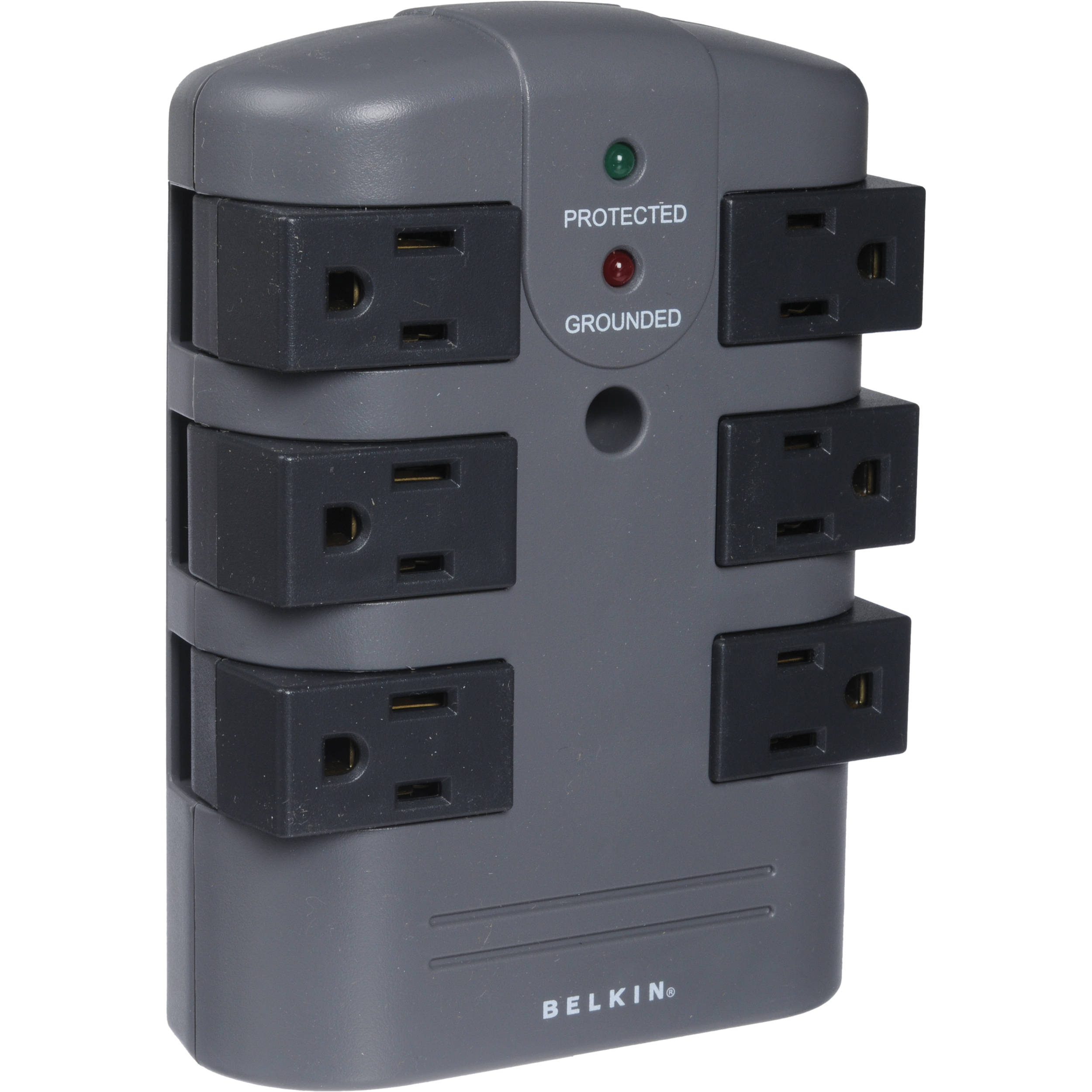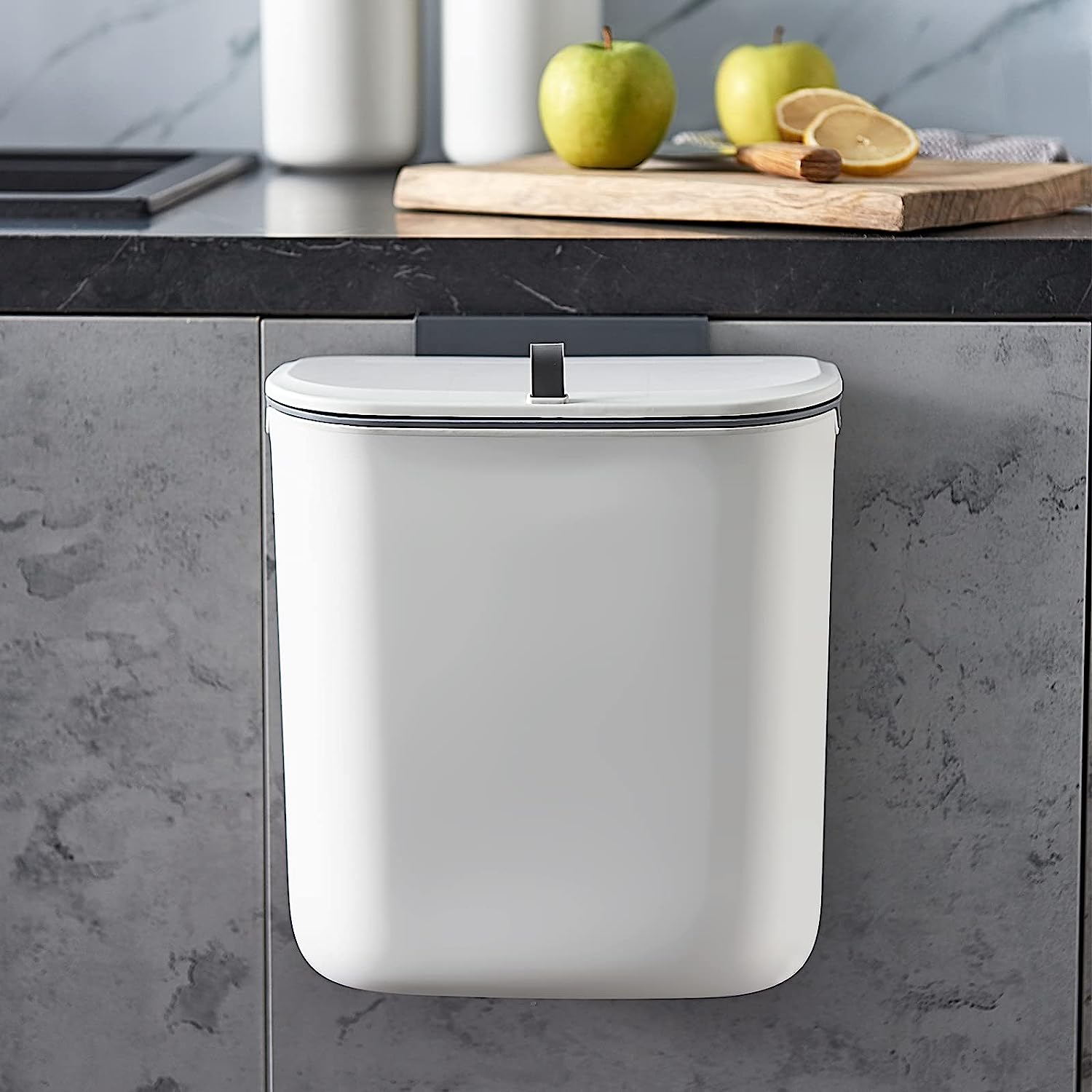Home>Articles>Which Of The Following Reduces The Risk Of Data Exposure Between Containers On A Cloud Platform?


Articles
Which Of The Following Reduces The Risk Of Data Exposure Between Containers On A Cloud Platform?
Modified: January 6, 2024
Reduce the risk of data exposure between containers on a cloud platform with effective data storage measures. Safeguard your information and enhance security.
(Many of the links in this article redirect to a specific reviewed product. Your purchase of these products through affiliate links helps to generate commission for Storables.com, at no extra cost. Learn more)
Introduction
With the rapid growth of cloud computing and the increasing adoption of containerization technologies, businesses are facing new challenges in securing their data. Data exposure between containers on a cloud platform is a potential risk that needs to be addressed effectively. Containers provide a lightweight and scalable solution for deploying applications, but they also introduce vulnerabilities that can lead to data breaches.
Containerization is a method of virtualization that allows applications to run in isolated environments called containers. Each container includes all the necessary components for the application to run, such as libraries, dependencies, and configuration files. However, sharing resources and allowing communication between containers can inadvertently expose sensitive data to unauthorized entities.
In this article, we will explore the various techniques that can be used to reduce the risk of data exposure between containers on a cloud platform. By implementing these measures, businesses can enhance the security of their data and minimize the chances of a breach.
Key Takeaways:
- Implementing a combination of container isolation techniques and security best practices, such as network segmentation, firewalls, and access control, is crucial for reducing the risk of data exposure between containers on a cloud platform.
- Regular vulnerability scanning and patching, along with monitoring and logging, are essential for proactively identifying and responding to potential security incidents, thereby minimizing the risk of data exposure in containerized environments.
Containerization and Data Exposure Risks
Containerization offers several benefits, including improved scalability, faster deployment, and efficient resource utilization. However, it also introduces new risks, especially when it comes to data security. One of the key concerns is the potential for data exposure between containers.
When multiple containers are running on the same cloud platform, they can potentially share the same underlying infrastructure, including network interfaces, storage, and memory. If proper isolation measures are not in place, one container may gain unauthorized access to data residing in another container.
There are several factors that contribute to the risks of data exposure in a containerized environment. First, containers often rely on shared kernel resources, which means that a vulnerability in one container could potentially affect others. Additionally, container orchestration platforms, such as Kubernetes, open up possibilities for cross-container communication, which can be exploited by attackers.
Moreover, containers are designed to be lightweight and ephemeral, which means that they can be easily created and discarded. This dynamic nature makes it challenging to maintain a clear understanding of the data flows and potential vulnerabilities within the container ecosystem. As a result, sensitive data may inadvertently leak between containers, leading to potential breaches.
To mitigate these risks and ensure data security, organizations should implement various isolation techniques and security measures. By doing so, they can protect sensitive data and maintain the integrity of their containerized applications.
Container Isolation Techniques
To reduce the risk of data exposure between containers on a cloud platform, organizations can employ a combination of container isolation techniques and security best practices. These measures help to enforce boundaries and prevent unauthorized access to sensitive data. Let’s explore some of the most effective techniques:
- Network Segmentation: Implementing network segmentation ensures that each container operates in its own isolated network. By isolating containers based on their specific requirements, organizations can prevent unauthorized access to sensitive data.
- Implementing Firewalls: Configuring firewalls at the container level can provide an additional layer of protection. Firewalls help to control inbound and outbound traffic, allowing only authorized communication and blocking potential threats.
- Container Hardening: Hardening containers involves applying security configurations and removing unnecessary components to minimize attack surfaces. This includes updating software, removing unused services, and limiting access privileges of containerized applications.
- Implementing Access Control: Establishing strict access controls ensures that only authorized personnel can access and interact with containers. This includes implementing role-based access control (RBAC), strong authentication mechanisms, and least privilege principles.
- Encrypting Data: Encryption plays a crucial role in securing sensitive data between containers. By encrypting data at rest and in transit, organizations can prevent unauthorized access even in the event of a breach.
- Regular Vulnerability Scanning and Patching: Performing regular vulnerability scans helps identify potential vulnerabilities in containerized applications. By promptly applying patches and updates, organizations can reduce the risk of exploitation and data exposure.
- Limiting Inter-container Communication: Controlling inter-container communication prevents unauthorized access between containers. Network policies and security groups can be implemented to restrict communication to only necessary components.
- Implementing Secure Authentication: Implementing secure authentication mechanisms, such as two-factor authentication (2FA) and secure access tokens, adds an extra layer of security to containerized applications.
- Monitoring and Logging: Continuous monitoring and logging of container activities can help identify any suspicious or unauthorized access attempts. It allows organizations to detect and respond to potential threats in real-time.
By implementing these container isolation techniques, organizations can significantly reduce the risk of data exposure between containers on a cloud platform. Each technique reinforces the security posture of containerized applications and ensures the protection of sensitive data.
Network Segmentation
Network segmentation is a crucial technique for reducing the risk of data exposure between containers on a cloud platform. By implementing network segmentation, organizations can create isolated networks for individual containers, preventing unauthorized access and limiting the potential impact of a breach.
When containers share the same network, there is a higher risk of data leakage or unauthorized access. Network segmentation divides the overall network into smaller, isolated segments, creating separate environments for each container. This ensures that even if one container is compromised, the others remain protected.
There are several ways to implement network segmentation for container environments:
- VLANs (Virtual Local Area Networks): VLANs create separate logical networks within a physical network infrastructure. Containers can be assigned to different VLANs based on their security requirements, isolating their network traffic.
- SDN (Software-Defined Networking): SDN offers programmable and flexible network control, allowing containers to be assigned to specific virtual networks. This enables granular control over traffic flows and enhances security.
- Overlay Networks: Overlay networks provide an abstraction layer on top of the existing network infrastructure, allowing containers to communicate securely over a virtual network. Tools like Flannel, Calico, and Weave offer overlay network capabilities and facilitate network segmentation.
- Container Network Interfaces (CNIs): CNIs provide network plugins that manage the creation and configuration of network interfaces within containers. CNIs can be used to create separate network namespaces for each container, further enhancing isolation.
- Microsegmentation: Microsegmentation goes beyond traditional network segmentation by creating fine-grained security policies at the container level. It allows organizations to enforce specific rules and restrictions between individual containers.
By implementing network segmentation, organizations can achieve a higher level of security for their containerized applications. It helps to minimize the attack surface, isolate potentially vulnerable containers, and prevent lateral movement by attackers.
However, it’s essential to carefully plan and define the segmentation strategy based on the specific requirements of the application and the sensitivity of the data. A well-thought-out network segmentation approach ensures the optimal balance between security and operational efficiency in a containerized environment.
Implementing Firewalls
Implementing firewalls is a crucial step in reducing the risk of data exposure between containers on a cloud platform. Firewalls act as a barrier between containers, controlling inbound and outbound traffic and preventing unauthorized access to sensitive data.
Firewalls can be deployed at both the host level and the container level to provide enhanced security. Here are some key considerations when implementing firewalls:
Host-Level Firewalls: Host-level firewalls are installed on the host machine and control traffic between the host and containers. They act as a first line of defense by filtering network traffic before it reaches the containers. Host-level firewalls can be configured to allow or deny specific ports, protocols, and IP addresses, providing granular control over communication between containers.
Container-Level Firewalls: Container-level firewalls operate within each container, restricting inbound and outbound traffic based on predefined rules. These firewalls can be implemented using tools like iptables or nftables. They allow organizations to define custom rules to control container communication and protect sensitive data.
When implementing firewalls for container environments, organizations should consider the following best practices:
- Default Deny: Adopt a “default deny” policy, which means that all inbound traffic to containers is blocked by default unless specifically allowed. This approach ensures that only authorized communication is permitted, reducing the attack surface.
- Whitelisting: Configure firewalls to only allow trusted sources of traffic, using whitelists to specify the IP addresses or domain names that are permitted to access the containers.
- Segmentation: Use firewalls to segment container networks based on security requirements. This helps to isolate containers and prevent lateral movement in the event of a breach.
- Logging and Monitoring: Enable logging and monitoring of firewall activities to detect any suspicious or unauthorized access attempts. Regularly review the logs to identify potential security incidents and take necessary action.
- Regular Updates: Keep the firewalls up to date with the latest security patches and updates. This ensures that any known vulnerabilities are patched, reducing the risk of exploitation.
Implementing firewalls adds an important layer of security to containerized environments. By controlling inbound and outbound traffic, organizations can prevent unauthorized access, limit the attack surface, and protect sensitive data residing in containers.
It’s important to design firewall rules based on the specific requirements of the application and regularly review and update them as needed. The goal is to strike a balance between allowing authorized communication and blocking potential threats.
Container Hardening
Container hardening is a critical step in reducing the risk of data exposure between containers on a cloud platform. Hardening involves securing the containerized environment by applying specific configurations and eliminating unnecessary components that can pose security risks.
Here are some key considerations when it comes to container hardening:
- Update Software: Keep the container software, including the operating system and applications, up to date with the latest security patches and updates. Regularly applying updates helps to address known vulnerabilities and reduce the risk of exploitation.
- Remove Unneeded Services and Packages: Eliminate any unnecessary services and packages within the container. These can create potential entry points for attackers and increase the attack surface. Only include the essential components required for the application to function properly.
- Minimize Container Privileges: Limit the privileges of the containerized application to the bare minimum necessary for it to execute its intended tasks. By using minimal permissions and employing the principle of least privilege, you can reduce the potential impact of a compromise.
- Enable Security Features: Take advantage of security features and protections provided by the container runtime or the underlying infrastructure. This could include running the container in read-only mode, leveraging user namespaces, and using seccomp profiles to restrict system calls.
- Implement Image Verification: Enable image verification mechanisms to ensure that only trusted and signed container images are used. This helps prevent the use of tampered or malicious images that could compromise the security and integrity of the container environment.
- Secure Configuration Files: Encrypt sensitive configuration files and avoid hardcoding secrets and credentials within the container. Store sensitive information in secure key management systems and only retrieve them when needed.
- Employ Container Scanning and Vulnerability Assessments: Regularly scan container images for known vulnerabilities and weaknesses. This can be done with tools that analyze image dependencies and check against vulnerability databases. Promptly address any identified issues by updating to patched versions or applying mitigations.
Container hardening practices enhance the security and resilience of the containerized environment. By removing unnecessary components, limiting privileges, and regularly updating software, organizations can minimize potential attack vectors and reduce the risk of data exposure.
It’s crucial to establish standard hardening procedures and incorporate them into the container development and deployment pipeline. By adopting a proactive approach to security and embracing container hardening best practices, organizations can better protect sensitive data within their containerized applications.
Implementing Access Control
Implementing access control measures is essential for reducing the risk of data exposure between containers on a cloud platform. By enforcing strong access controls, organizations can ensure that only authorized personnel can access and interact with containers, protecting sensitive data from unauthorized access.
Here are some key considerations when it comes to implementing access control for container environments:
- Role-Based Access Control (RBAC): Implement RBAC to define and manage user roles and permissions within the container environment. This ensures that users only have access to the resources and actions that are necessary for their specific roles.
- Strong Authentication Mechanisms: Utilize strong authentication mechanisms, such as multifactor authentication (MFA) or certificates, to authenticate users accessing the container management interfaces or APIs. This adds an extra layer of security and prevents unauthorized access.
- Least Privilege Principle: Apply the principle of least privilege when assigning permissions to users. Only grant the minimum privileges required for users to perform their designated tasks. Regularly review and update permissions to align with changing roles and responsibilities.
- Secure Credential Management: Ensure secure storage and management of credentials used for container access, such as SSH keys, API tokens, or passwords. Store credentials in secure key management systems or password vaults and avoid storing them in plain text within containers.
- Container Registry Access Control: Control access to container registries that store container images. Limit who can push or pull images from the registry to prevent unauthorized or tampered images from being used in the container environment.
- Audit Logs: Enable auditing and logging of user activities within the container environment. This allows for traceability and accountability, making it possible to identify any suspicious or unauthorized activities and investigate potential security incidents.
- Regular User Access Reviews: Conduct periodic reviews of user access rights to ensure that permissions are still necessary and appropriate. Remove or modify access permissions for users who no longer require them, such as employees who have changed roles or left the organization.
By implementing strong access control measures, organizations can significantly reduce the risk of unauthorized access to containers and the sensitive data they contain. By enforcing RBAC, employing strong authentication mechanisms, and following the principle of least privilege, organizations can ensure that only authorized individuals can access and manipulate containerized applications.
It is essential to regularly review and update access control policies and permissions to reflect organizational changes and evolving security needs. By maintaining a robust access control framework, organizations can enhance the security posture of their containerized environments.
Use network segmentation and isolation to reduce the risk of data exposure between containers on a cloud platform. This involves creating separate network segments for different containers and implementing strict access controls.
Encrypting Data
Encrypting data is a crucial measure for reducing the risk of data exposure between containers on a cloud platform. Encryption transforms data into unreadable ciphertext, ensuring that even if unauthorized access occurs, the data remains protected and unintelligible to attackers.
Here are key considerations when implementing data encryption in container environments:
- Encryption at Rest: Encrypting data at rest involves encrypting data when it is stored in persistent storage, such as databases or file systems. This ensures that if the storage medium is compromised, the data remains encrypted and unreadable. Utilize encryption mechanisms provided by the storage platform or use application-level encryption.
- Encryption in Transit: Encrypting data in transit involves securing data as it moves between containers or across the network. Ensure that all communication channels between containers are encrypted using protocols like SSL/TLS. This prevents eavesdropping and ensures that data cannot be intercepted and decrypted by unauthorized entities.
- Key Management: Implement a robust key management system to securely generate, store, and manage encryption keys. The key management system should ensure that keys are protected, rotated regularly, and only accessible to authorized personnel. Consider using hardware security modules (HSMs) for enhanced security.
- Application-layer Encryption: In addition to encrypting data at rest and in transit, consider implementing application-level encryption. This involves encrypting sensitive data within the application itself, ensuring that even if an attacker gains access to the container, they cannot decipher the sensitive information.
- Secure Key Exchange: When encrypting data in transit, use secure key exchange protocols, such as Diffie-Hellman or RSA, to ensure that encryption keys are securely exchanged between communicating entities. This prevents unauthorized interception or tampering of the encryption keys.
- Consider Regulatory Requirements: Depending on the industry or location, organizations may need to comply with specific data protection regulations that mandate data encryption. Ensure that encryption practices align with the applicable regulatory requirements to mitigate legal and compliance risks.
By implementing strong data encryption practices, organizations can ensure the confidentiality and integrity of their sensitive data within containerized environments. Encryption protects data from unauthorized access, whether it is at rest, in transit, or within the application itself.
It is important to carefully plan and design the encryption strategy, considering the sensitivity of the data, the performance implications, and the key management practices. With proper encryption measures in place, organizations can confidently protect their data and reduce the risk of data exposure in containerized environments.
Regular Vulnerability Scanning and Patching
Regular vulnerability scanning and patching is a critical practice for reducing the risk of data exposure between containers on a cloud platform. Containers, like any other software, can have vulnerabilities that can be exploited by attackers. To ensure the security of containerized environments, organizations must regularly scan for vulnerabilities and promptly apply patches and updates.
Here are key considerations for implementing regular vulnerability scanning and patching in container environments:
- Vulnerability Scanning: Conduct regular vulnerability scans on container images or the entire container environment. Use automated scanning tools that analyze container images and their dependencies, checking them against vulnerability databases. This helps identify potential vulnerabilities that could be exploited by attackers.
- Patch Management: Establish a well-defined patch management process to regularly apply updates and patches to both the container runtime and the underlying host system. Promptly address any identified vulnerabilities by updating to patched versions or applying mitigations recommended by the vendor.
- Automated Scanning and Patching: Automate the vulnerability scanning and patching processes wherever possible. This ensures that scans are performed regularly, new vulnerabilities are promptly identified, and patches are applied in a timely manner. Automated tools can help streamline and accelerate the process while reducing the risk of human error.
- Testing and Staging Environments: Establish testing and staging environments to validate patches and updates before deploying them to production environments. This allows organizations to ensure that patches do not introduce compatibility issues or disrupt the functionality of containerized applications.
- Monitoring for New Vulnerabilities: Stay informed about new vulnerabilities and security advisories that are relevant to the container environment. Join relevant security mailing lists, subscribe to vulnerability feeds, and regularly review security bulletins from container runtime and operating system vendors.
- Regular Security Audits: Conduct regular security audits for the container environment to identify potential security weaknesses and vulnerabilities. This includes reviewing container configurations, access controls, and logs from vulnerability scanning and monitoring tools.
Regular vulnerability scanning and patching is essential for maintaining the security and integrity of containerized environments. By promptly addressing known vulnerabilities, organizations can significantly reduce the risk of data exposure due to exploits and attacks.
It is crucial to integrate vulnerability management practices into the container lifecycle management process. By adopting a proactive approach to vulnerability scanning and patching, organizations can effectively protect their containerized applications and the sensitive data they contain.
Limiting Inter-container Communication
Limiting inter-container communication is an important measure for reducing the risk of data exposure between containers on a cloud platform. By controlling and restricting communication between containers, organizations can minimize the potential pathways for data leakage or unauthorized access.
Here are key considerations for implementing inter-container communication limitations:
- Container Network Policies: Implement container network policies to define and enforce rules for inbound and outbound traffic between containers. Container network policies act as a firewall, allowing organizations to control communication based on IP addresses, ports, and protocols.
- Microsegmentation: Implement microsegmentation to create more granular control over the communication between individual containers. By dividing the container environment into smaller segments, organizations can define stricter policies and limit access between specific containers.
- Isolated Networks: Consider using isolated networks for different groups of containers based on their security requirements. By separating containers into different networks, organizations can minimize the attack surface, preventing unwanted communication between containers that should remain isolated.
- Container Orchestrators: Leverage container orchestrators like Kubernetes to manage and control the networking capabilities of containers. These orchestrators provide tools and features to implement network security policies, such as network policies and network plugins.
- Container Runtime Options: Explore container runtime options that provide additional security features to limit inter-container communication. For example, container runtimes like Docker offer network isolation modes that can restrict communication between containers.
- Default Deny: Adopt a “default deny” policy for inter-container communication. This means that all communication is blocked by default unless specifically permitted. This approach ensures that only authorized communication channels are established.
- Regularly Review Container Communication: Regularly review and audit inter-container communication to identify any unauthorized or unnecessary connections. Removing unnecessary communication channels between containers reduces the attack surface and helps maintain a secure environment.
By limiting inter-container communication, organizations can strengthen the security of their containerized environments. By defining and enforcing strict network policies, using microsegmentation, and isolating containers into separate networks, organizations can significantly reduce the risk of data exposure and unauthorized access.
When implementing limits on inter-container communication, strike a balance between security and operational requirements. Ensure that necessary communication channels are allowed while blocking unnecessary or potentially vulnerable connections.
Implementing Secure Authentication
Implementing secure authentication mechanisms is crucial for reducing the risk of data exposure between containers on a cloud platform. Strong authentication ensures that only authorized individuals can access and interact with containerized applications, preventing unauthorized access and protecting sensitive data.
Here are key considerations for implementing secure authentication in container environments:
- Two-Factor Authentication (2FA): Implement 2FA to add an extra layer of security to the authentication process. With 2FA, users are required to provide a second form of verification, such as a one-time password or biometric authentication, in addition to their username and password.
- Secure Access Tokens: Instead of relying on traditional username/password authentication, consider using secure access tokens for container access. Access tokens are generated and provided to authenticated users, which can be used as credentials to interact with containers.
- Secure Identity and Access Management (IAM): Utilize a robust IAM system to manage user identities and access controls within the container environment. IAM helps enforce policies, roles, and permissions, ensuring that users have appropriate access based on their roles and responsibilities.
- Container Management Interfaces: Secure container management interfaces with strong authentication mechanisms. Use secure protocols like HTTPS and implement measures like IP whitelisting, rate limiting, and session management to prevent unauthorized access.
- Protecting Credential Secrets: Safeguard sensitive credential secrets used for authentication, such as API keys or access tokens. Avoid hardcoding credentials within containers or storing them in plain text. Instead, use secure key management systems or secrets management tools to securely store and retrieve credentials when needed.
- Regularly Review and Update Access: Conduct regular reviews of user access rights and permissions within the container environment. Remove or modify access for users who have changed roles or no longer require access, minimizing the risk of unauthorized access.
- Audit and Monitoring: Enable auditing and monitoring of authentication activities within the container environment. Monitor for suspicious login attempts, excessive failed authentication attempts, or anomalies in user authentication behavior. This allows for prompt detection and response to potential security incidents.
By implementing secure authentication mechanisms, organizations can enforce strict access controls and protect sensitive data within containerized applications. Secure authentication mitigates the risk of unauthorized access, reduces the opportunity for attackers to exploit vulnerabilities, and enhances the overall security posture of containerized environments.
When implementing secure authentication measures, strike a balance between security and usability. Ensure that authentication processes are user-friendly and straightforward while maintaining a high level of security to prevent unauthorized access.
Monitoring and Logging
Monitoring and logging are critical practices for reducing the risk of data exposure between containers on a cloud platform. By implementing robust monitoring and logging systems, organizations can detect and respond to potential security incidents in real-time, helping to protect sensitive data and maintain the integrity of containerized environments.
Here are key considerations for implementing effective monitoring and logging practices in container environments:
- Centralized Logging: Configure containers to send logs to a centralized logging system. This allows for better visibility and the ability to correlate logs from multiple containers, making it easier to detect potential security threats and anomalies.
- Real-time Monitoring: Set up real-time monitoring of container activities, including resource usage, network connections, and authentication attempts. Monitoring tools can provide alerts for suspicious activities or deviations from normal behavior, allowing for immediate response and mitigation.
- Anomaly Detection: Utilize anomaly detection techniques to identify abnormal patterns or behaviors within containerized environments. Machine learning algorithms can analyze log data and identify deviations that may indicate a security incident or potential data exposure.
- Performance Monitoring: Monitor the performance of containers and the underlying infrastructure to detect any performance issues or bottlenecks that could impact security. Poor performance can be an indication of a security compromise or an attack in progress.
- Incident Response: Establish an incident response plan that outlines the steps to be taken in the event of a security incident. Define roles and responsibilities, establish communication channels, and regularly conduct drills and tests to ensure a timely and effective response in case of a breach.
- Log Retention and Analysis: Retain logs for an appropriate period based on regulatory requirements and business needs. Regularly analyze logs for indicators of compromise, unauthorized access attempts, or other security incidents. Log analysis can help identify the root cause of incidents and inform future security improvements.
- Integrate with Security Information and Event Management (SIEM) Systems: Integrate monitoring and logging systems with SIEM tools to aggregate and correlate security events from various sources. SIEM provides a centralized view of security-related events, enabling organizations to detect and respond to security incidents more effectively.
By implementing comprehensive monitoring and logging practices, organizations can proactively identify and respond to potential security incidents, reducing the risk of data exposure in containerized environments. Timely detection and response are crucial for minimizing the impact of security threats and maintaining the integrity of sensitive data.
Regularly review and update monitoring tools and practices to keep pace with evolving security threats and changing container environments. Continuously fine-tune monitoring and logging systems to detect emerging attack vectors and stay one step ahead of potential security risks.
Conclusion
Data exposure between containers on a cloud platform is a significant risk that organizations must address to maintain the security and integrity of their containerized environments. By implementing a combination of container isolation techniques and security best practices, organizations can reduce the risk of data exposure and mitigate the potential impact of a breach.
Network segmentation, implementing firewalls, container hardening, implementing access control, encrypting data, regular vulnerability scanning and patching, limiting inter-container communication, implementing secure authentication, and monitoring and logging are all critical measures for minimizing the risk of data exposure.
Network segmentation creates isolated networks for individual containers, preventing unauthorized access and limiting the potential impact of a breach. Firewalls act as a barrier between containers, controlling inbound and outbound traffic and preventing unauthorized access to sensitive data.
Container hardening involves securing the containerized environment by applying specific configurations and removing unnecessary components that can pose security risks. Implementing access control ensures that only authorized personnel can access and interact with containers, protecting sensitive data from unauthorized access.
Encrypting data at rest and in transit ensures that even if unauthorized access occurs, the data remains protected and unintelligible to attackers. Regular vulnerability scanning and patching help to identify and address potential vulnerabilities in containerized applications in a timely manner.
Limiting inter-container communication helps reduce the potential pathways for data leakage or unauthorized access. Implementing secure authentication mechanisms ensures that only authorized individuals can access and interact with containerized applications.
Monitoring and logging provide real-time visibility into container activities, helping to detect and respond to potential security incidents promptly. By implementing these measures, organizations can enhance the security of their containerized environments and minimize the risk of data exposure.
It is important for organizations to continually evaluate and adapt their security practices as the container landscape evolves, staying informed about emerging threat vectors and implementing the necessary controls to protect their data. By adopting a proactive and comprehensive approach to securing containerized environments, organizations can confidently leverage the benefits of containerization while minimizing the potential risks associated with data exposure.
Frequently Asked Questions about Which Of The Following Reduces The Risk Of Data Exposure Between Containers On A Cloud Platform?
Was this page helpful?
At Storables.com, we guarantee accurate and reliable information. Our content, validated by Expert Board Contributors, is crafted following stringent Editorial Policies. We're committed to providing you with well-researched, expert-backed insights for all your informational needs.







0 thoughts on “Which Of The Following Reduces The Risk Of Data Exposure Between Containers On A Cloud Platform?”